Mometasone Treatment Duration Calculator
This tool helps determine safe treatment duration for Mometasone based on clinical evidence. Short-term use (≤2 weeks) typically improves barrier function, while long-term use may compromise the skin barrier. Follow your dermatologist's guidance for personalized treatment.
When a dermatologist prescribes a cream, most patients only think about the rash disappearing. Few realize that the active ingredient, often a steroid like Mometasone, is also nudging the skin’s protective wall - the skin barrier - in ways that can be both helpful and harmful.
What is Mometasone?
Mometasone is a synthetic medium‑potency topical corticosteroid that has been on the market since the early 1990s. It works by binding to glucocorticoid receptors in skin cells, turning down the production of inflammatory signals such as prostaglandins and cytokines. Because it is absorbed well through the epidermis, it can calm flare‑ups of atopic dermatitis, psoriasis, and contact dermatitis within days.
How does the skin barrier function?
Skin Barrier refers to the outermost layer of the skin - the stratum corneum - plus the lipids that glue the corneocytes together. Its main jobs are to keep water in, keep irritants out, and block microbes. Key components include ceramides, cholesterol, and free fatty acids, arranged in a “brick‑and‑mortar” fashion. Proteins like Filaggrin break down into natural moisturizing factors that attract water.
The pharmacology behind barrier modulation
Corticosteroids, including Mometasone, affect the barrier on several levels. First, by reducing inflammation, they decrease the release of enzymes that degrade lipids and structural proteins. Second, they can suppress the synthesis of new lipids, especially ceramides, because glucocorticoid signaling down‑regulates enzymes such as serine palmitoyl‑transferase. Third, chronic exposure can thin the epidermis by lowering keratinocyte proliferation, which may reduce the overall barrier thickness.
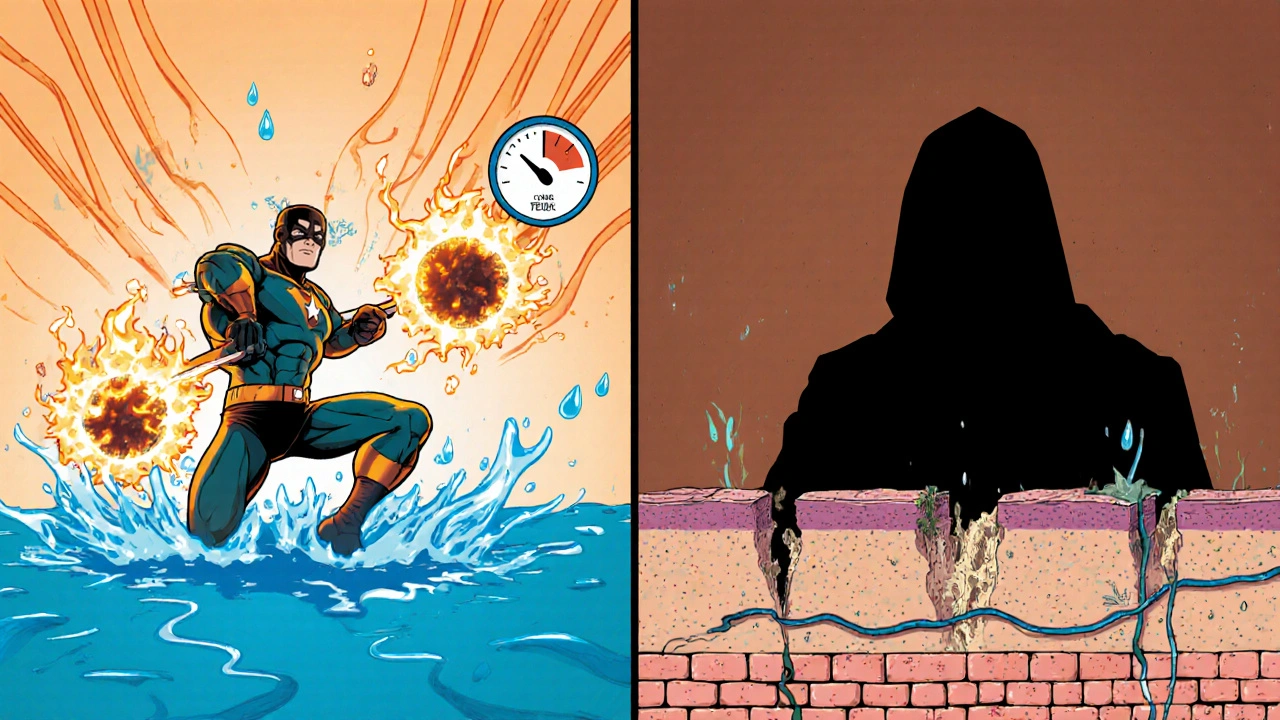
Clinical evidence: short‑term wins, long‑term trade‑offs
Researchers have measured barrier performance with transepidermal water loss (TEWL), lipid profiling, and protein expression. Below is a snapshot of findings from three pivotal studies.
| Parameter | Short‑term (≤2weeks) | Long‑term (>4weeks) | Representative Study |
|---|---|---|---|
| TEWL | Decrease 20‑30% (improved barrier) | Return to baseline or slight increase | J Dermatol Sci 2022; 115:47‑54 |
| Ceramide(III) levels | No significant change | Drop 15‑25% compared with control | Skin Pharmacol 2021; 34:112‑119 |
| Filaggrin expression | Stable or slight rise | Reduced by ~10% | Clin Exp Dermatol 2023; 48:302‑309 |
In the short run, the anti‑inflammatory action wins - TEWL falls and patients feel less itch. Over months, the steroid’s dampening of lipid synthesis can erode the barrier, making the skin more prone to dryness and secondary infection.
Benefits and risks for specific skin conditions
Atopic Dermatitis (AD) is characterized by a leaky barrier and heightened immune activity. Mometasone’s rapid itch relief often restores sleep before barrier repair catches up. However, if used longer than 2‑3weeks without moisturiser support, the underlying ceramide deficit can worsen the chronic AD cycle.
Psoriasis involves hyper‑proliferation of keratinocytes, leading to a thickened yet still dysfunctional barrier. Here, Mometasone’s ability to thin the plaques improves barrier consistency, but extended therapy may increase the risk of skin atrophy.
For Contact Dermatitis, the barrier is already compromised by irritants. A brief course (5‑7days) of Mometasone can block the inflammatory cascade while a barrier‑repair moisturizer restores lipid balance.
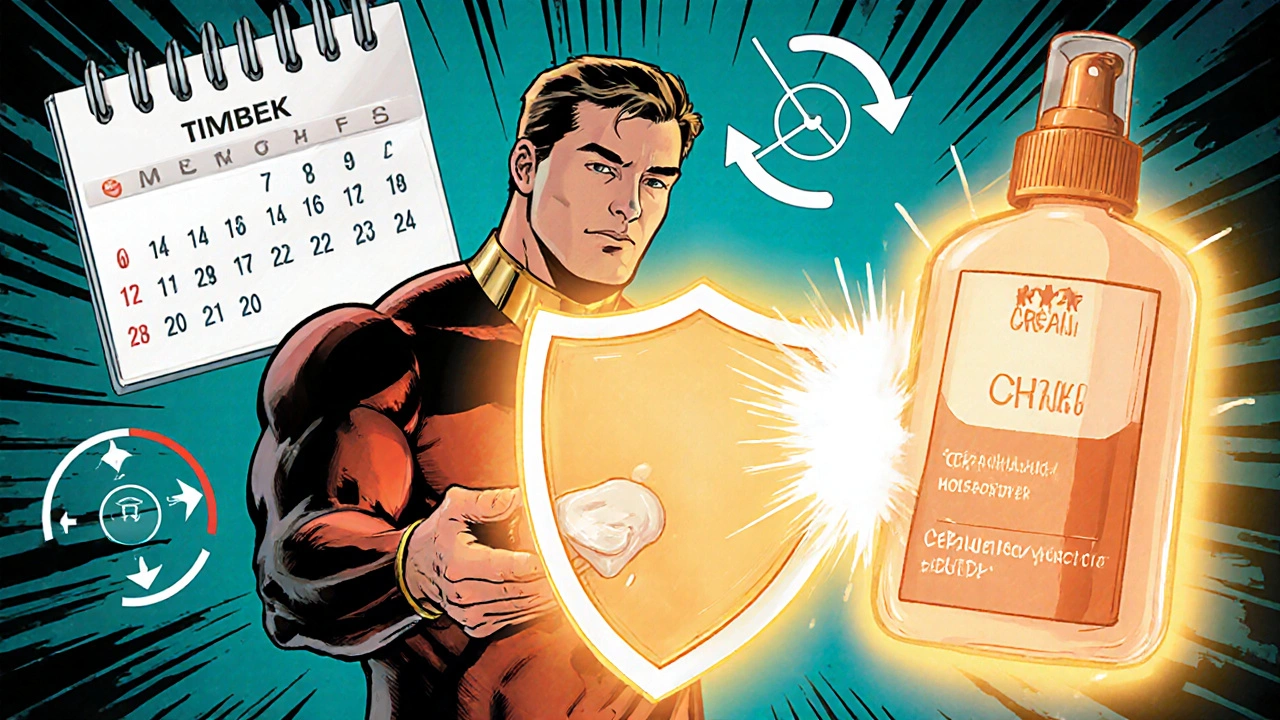
Practical guidance for patients and clinicians
- Start low, go short. Apply a thin layer once or twice daily for no more than 2weeks for acute flares.
- Pair with moisturisers. Choose a ceramide‑rich cream (e.g., containingceramideNP, cholesterol, and free fatty acids) immediately after the steroid to lock in water and replenish lipids.
- Monitor TEWL or skin feel. If the skin feels tighter or starts to peel, reduce frequency or switch to a lower‑potency steroid like hydrocortisone.
- Rotate sites. Avoid continuous daily use on the same spot; give the area a weekend break to let the barrier recover.
- Educate about tapering. When stopping, slowly taper the dose over several days while maintaining moisturiser use to prevent rebound inflammation.
Clinicians should document the potency, area treated, and duration in the patient’s chart. If a patient requires long‑term control, consider non‑steroidal options such as calcineurin inhibitors or emerging topical phosphodiesterase‑4 inhibitors, which have a milder impact on barrier lipids.
Key takeaways
- Mometasone quickly lowers inflammation, which often improves barrier measurements in the short term.
- Prolonged use can suppress ceramide synthesis and thin the epidermis, undoing some of the early gains.
- Combining Mometasone with barrier‑repair moisturisers and limiting treatment duration preserves long‑term skin health.
Frequently Asked Questions
Can I use Mometasone on my face?
Yes, but only for short periods (usually under 7days) and under a doctor’s supervision. The facial skin barrier is thin, so the risk of atrophy is higher.
Why does my skin feel drier after using Mometasone for a month?
Long‑term steroid use can lower ceramide production, which reduces the skin’s ability to hold moisture. Adding a ceramide‑rich moisturiser can counteract this effect.
Is it safe to combine Mometasone with a sunscreen?
Absolutely. In fact, sunscreen protects the barrier from UV‑induced damage, which can otherwise worsen inflammation. Apply sunscreen after the moisturiser, not directly over the steroid.
What are the signs of steroid‑induced skin thinning?
Look for easy bruising, a translucent appearance, visible blood vessels, or a feeling of tightness. If you notice these, stop the steroid and see a dermatologist.
Can children use Mometasone safely?
Pediatric use is allowed for certain conditions, but the dosage must be low and the treatment period short because children’s skin absorbs more drug per surface area.

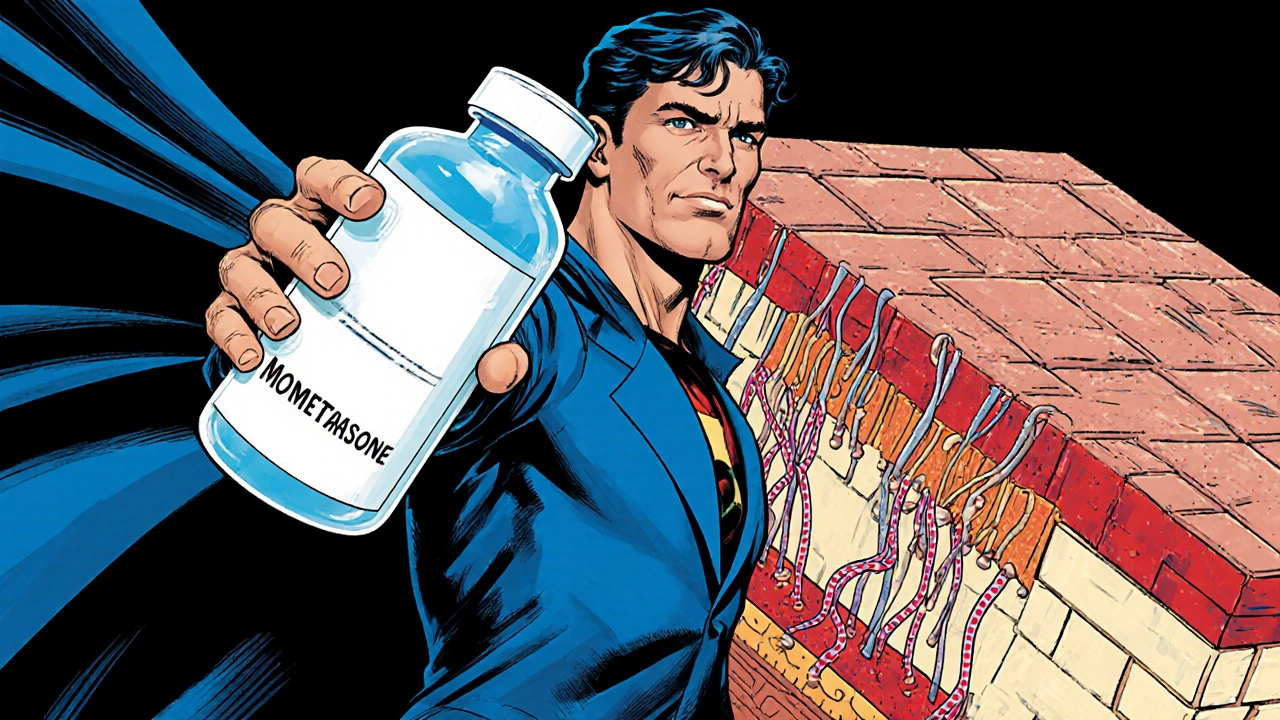

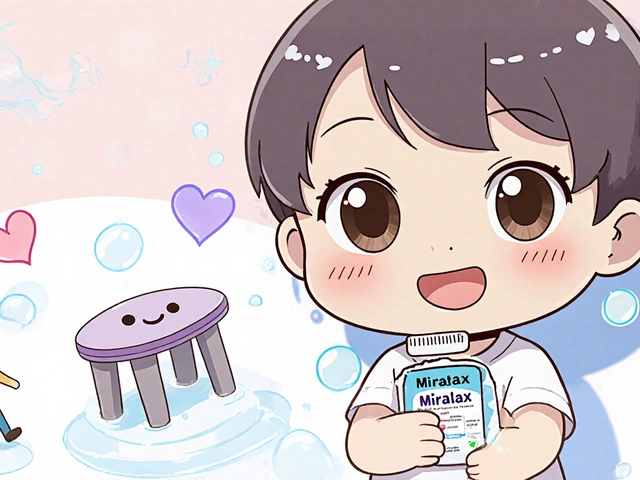
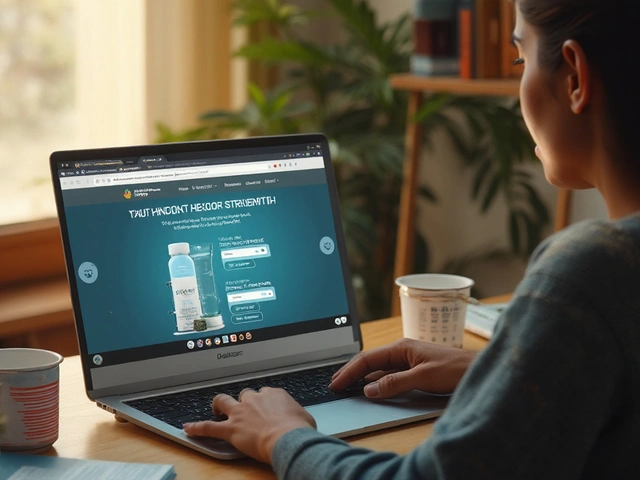


Tara Timlin
October 16, 2025The short course of mometasone is a handy tool for dampening flare‑ups, but it’s not a magic fix for a broken barrier. When the steroid tames inflammation, the skin naturally loses less water, so TEWL drops and patients notice instant relief. That immediate improvement, however, can mask the fact that the drug also slows down the synthesis of key lipids like ceramides. Without a steady supply of ceramides, the “brick‑and‑mortar” structure of the stratum corneum becomes a little more porous over time. In practice that means the skin feels drier after a few weeks of uninterrupted use. The good news is that pairing the steroid with a ceramide‑rich moisturizer restores the missing lipids and keeps the barrier intact.
Apply the moisturizer right after you finish the mometasone layer while the skin is still slightly damp to lock in hydration. For most adult patients a two‑week course is enough to break the itch‑scratch cycle without causing noticeable atrophy. If you need to continue treatment beyond that, switch to a lower‑potency steroid or a non‑steroidal anti‑inflammatory like a topical calcineurin inhibitor. Regularly inspect the treated area for signs of thinning, such as a translucent appearance or visible blood vessels. If those signs appear, reduce the frequency or take a weekend break to give keratinocytes a chance to proliferate again. Children’s skin is especially sensitive, so the same principles apply but with even shorter courses and careful monitoring. Sunscreen should never be skipped, because UV damage can further compromise the barrier that the steroid is trying to protect.
Finally, keep a diary of how your skin feels day‑to‑day; noting any increase in tightness or flaking can help you and your dermatologist adjust the regimen before problems arise. In short, think of mometasone as a short‑term fire‑fighter and the moisturizer as the rebuilding crew that keeps your skin house standing strong.